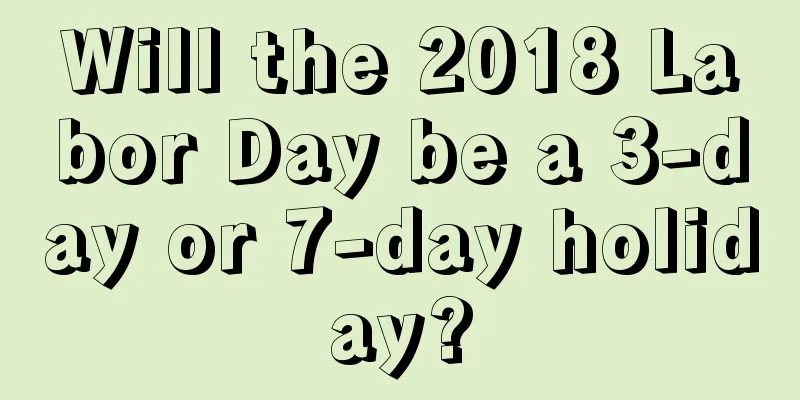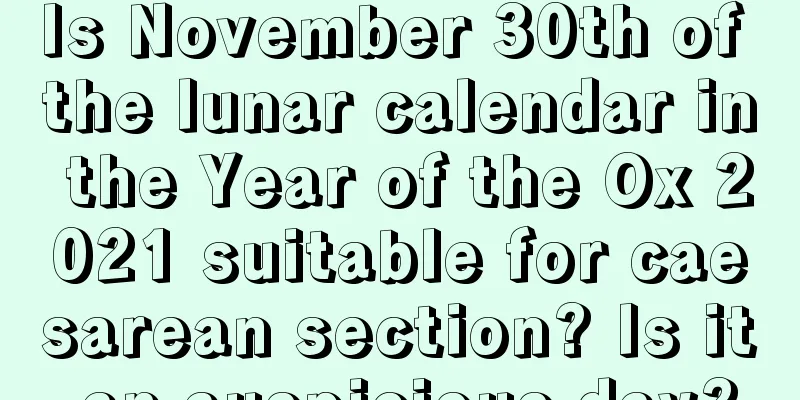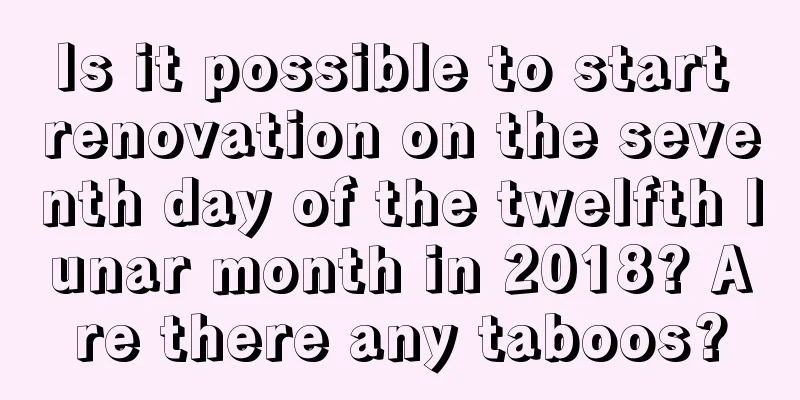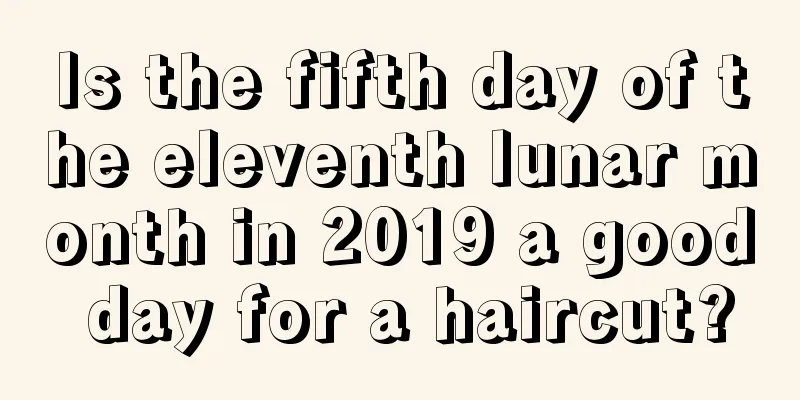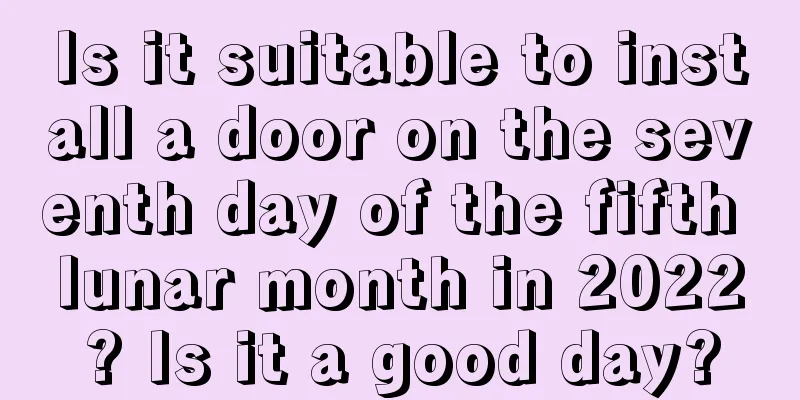What customs are there during the Summer Solstice? When is it?

The Summer Solstice is the first of the 24 solar terms to be determined and is also the hottest time of the year. What are the customs of the Summer Solstice? When is the summer solstice? The fifth month of the lunar calendar is considered a poisonous month in Chinese folklore. It is known as the most poisonous month of the year. The Fortune Teller website will help you understand the days of the fifth lunar month in 2018!Summer Solstice Customs:Offering sacrifices to gods and ancestors : The summer solstice is the time of wheat harvest. Since ancient times, there has been a custom of celebrating the harvest and offering sacrifices to ancestors at this time to pray for the elimination of disasters and a good harvest. Therefore, the summer solstice was incorporated into the ancient rituals of worshiping gods as a festival. "The Book of Zhou: Spring Officials" states: "When the summer solstice comes, bring local animals and demons." In the Zhou Dynasty, offering sacrifices to gods at the summer solstice was meant to eliminate famine, hunger and death. The summer solstice falls after the wheat harvest, and farmers thank God for the good harvest and pray for "autumn rewards." Around the summer solstice, some places hold a grand "summer wheat harvest" ceremony, which is a remnant of the ancient "summer sacrifice" activity.To get rid of the summer heat and avoid the dog days: On the summer solstice, women give each other folding fans, cosmetics and other gifts. "Youyang Zazu·Liyi" records: "On the summer solstice, fans and powder and rouge bags are presented, and both have words." "Fan" is used to create wind; "powder and rouge" are used to apply on the body to disperse the turbid air generated by body heat and prevent prickly heat. In the imperial court, after the "summer solstice", the royal family would take out the ice that was "stored in winter for use in summer" to "cool off the summer heat and avoid the dog days". This practice began in the Zhou Dynasty and was followed by successive dynasties, eventually becoming an institutional practice. “Summer Solstice” Food : “Wheat Zongzi” and “Summer Solstice Cake”: A Jiangnan food custom, generally including wheat Zongzi, glutinous rice dumplings, plums, wontons, noodle soup, etc. "Wujiang County Chronicles" records: "On the summer solstice, wheat dumplings are made and given to each other after the sacrifice is completed." People not only eat "wheat dumplings", but also give them as gifts to each other. On the summer solstice, farmers roll out dough into thin pancakes, bake them, and fill them with vegetables, bean pods, tofu, and bacon. They eat them after offering sacrifices to their ancestors. They are commonly called "summer solstice pancakes," or they are given to relatives and friends. Wontons at the Winter Solstice and Noodles at the Summer Solstice: Since ancient times, the Chinese people have had a saying "eat wontons at the Winter Solstice and noodles at the Summer Solstice". In the Jiangnan area, eating noodles at the Summer Solstice is an important custom in many areas. There is a saying among the people that "after eating noodles at the Summer Solstice, the day will be one line shorter." There are many varieties of noodles in the south, such as Yangchun noodles, dry soup noodles, shredded pork noodles, three fresh noodles, Guoqiao noodles and sesame oil cold noodles, while in the north there are noodles with gravy and noodles with soybean paste. "Because the new wheat has already arrived during the summer solstice, eating noodles during the summer solstice also means trying something new." When is the Summer Solstice?Among the 24 solar terms in a year, the Summer Solstice is the first one to be determined. As early as the seventh century BC, our ancestors used a gnomon to measure the sun's shadow and determined the summer solstice. The summer solstice begins on June 21st (or 22nd) every year and ends on July 7th (or 8th).The summer solstice is the day with the longest daylight in the northern hemisphere, marking the arrival of midsummer. In southern my country, the daylight from sunrise to sunset is mostly about fourteen hours. Although the summer solstice has the longest daylight and the highest sun angle, it is not the hottest time of the year. As the saying goes, "The heat is in the dog days", the real hot weather is calculated based on the summer solstice and the beginning of autumn. From mid-July to mid-August, the temperature in all parts of my country is at its highest, with the highest temperature in some areas reaching around 40 degrees Celsius. The summer solstice was also called "Summer Festival" or "Summer Solstice Festival" in ancient times. In ancient times, on the summer solstice, people offered sacrifices to gods to pray for the elimination of disasters and a good harvest. The Summer Solstice is the earliest festival in my country. Before the Qing Dynasty, the whole country had a day off on the summer solstice, and people would go home to reunite with their families and drink. From the perspective of traditional Chinese medicine, the summer solstice is the time when Yang energy is at its peak. To maintain good health, one must conform to the characteristics of summer when Yang is more abundant outside, pay attention to protecting Yang energy, and focus on the word "long". |
<<: Check the auspicious days and times for the summer solstice in 2018!
Recommend
What should we eat during the Shangsi Festival on March 3rd?
The traditional food for different festivals is al...
What are the auspicious and inauspicious days on the 19th day of the first lunar month in 2019?
Some days are auspicious, while others are inausp...
Is it okay to have a baby born on the first day of the eleventh lunar month in 2021? Is it suitable for a caesarean section?
The eleventh month of the lunar calendar belongs t...
Is it okay to move the day before the Dragon Boat Festival in 2020? What traditional food do you eat during the Dragon Boat Festival?
Introduction: It is necessary to choose an auspici...
How many hours and minutes of sunshine will there be during the summer solstice in 2021? Is the summer solstice the hottest day?
Speaking of the summer solstice, I believe everyon...
Which day is the best to move in December 2019? What are the requirements for moving?
In this era of soaring prices, moving is not an ea...
What is the origin, history and significance of May 1st International Labor Day?
Introduction: Every holiday has its own special me...
When is Xiaoman in 2021? Will it rain during the Grain Full solar term in 2021?
The Grain Full solar term is one of the twenty-fou...
Where is the auspicious position of the God of Wealth on the Ghost Festival on the 15th day of the seventh lunar month in 2017?
Introduction: In our folk legends, the God of Weal...
Is the National Day in 2018 on a good lunar calendar? Is the National Day an auspicious day?
Introduction: Different days unfold in different w...
Is May 12, 2019 a good date to pick up the car?
The fifth month of the lunar calendar is midsumme...
Is the seventh day of the twelfth lunar month in 2019 a good date in the lunar calendar?
Is the seventh day of the twelfth lunar month in ...
Do girls born on the second day of the third lunar month in 2022 have good fortune? What is their personality like?
The third month of the lunar calendar is the third...
Is the seventh day of the first lunar month in 2020 suitable for opening a new store or company? What’s the Feng Shui for opening a new store?
The opening of a business requires an auspicious ...
How about moving during Laba Festival in 2020? Is it a good day to move?
The pros and cons of moving at different times are...
